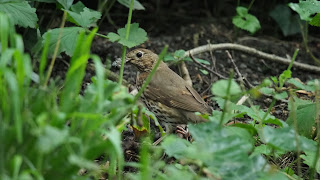July 22nd and in the afternoon went back to Pulpit Hill mainly looking for butterflies and found 15 species.
A good start when a pair of silver-washed fritillaries led me into the woods passing another common woodland species, the speckled wood. In the clearings peacock were feeding on the thistle heads along with ringlets and meadow browns. Holly blues and gatekeepers, large whites, red admiral and brimstones also seen here. Passing an impressive beech before coming out on to the chalk hillside and its many wildflowers and more butterflies including chalkhill and common blues, males and females all very active, small heaths, small coppers and large skippers too. Had a few days in the garden and on Saturday morning, 25th, had the now increasing mixed tit flock come into the garden and with them a few chiffchaffs and we had one fly into the house, once around the kitchen and out through the open back door and carried on feeding in the fennel close by. Monday 27th and met Don at Missenden Abbey in the rain and watched the lake there for an hour. Good numbers of swallows and house martins, adult and young continually feeding over the lake. Coot, moorhen, mallard and tufted ducks with young also an adult and juvenile little grebe present. A heron flew in. A juvenile grey wagtail came close and too close to it's moulting parent. Went back Tuesday morning but to the lake at the far end and found more tufted duck with young and also mallard and Canada geese with gosling. At home watched a young dunnock sunning itself. Later that afternoon a walk past a barley field with a few poppies growing through it, looking how they all used to I guess. Stewart.Images Copyright : Stewart Dennis.



























































